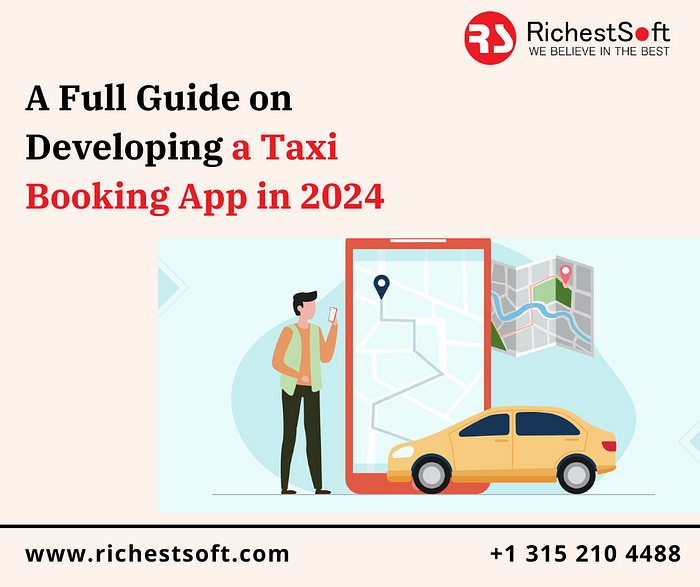In the rapidly evolving landscape of urban transportation, the taxi booking app has emerged as a pivotal solution, revolutionizing the way people commute. With the advent of advanced technology and the growing demand for convenient travel options, developing a robust taxi booking app has become more pertinent than ever. In this comprehensive guide, we will delve into the intricacies of creating a top-notch taxi booking app in 2024, tailored for modern consumers. Our focus will be on offering a user-friendly interface, seamless functionality, and robust security features, ensuring a superior experience for both riders and drivers.

- Understanding Market Dynamics: Before embarking on the development journey, it’s crucial to conduct thorough market research to understand the evolving needs and preferences of customers. Analyze existing taxi booking apps, identify gaps, and explore innovative features that can set your app apart in the competitive landscape.
- Defining Core Features: Define the core features of your taxi booking app, including user registration, real-time vehicle tracking, fare estimation, secure payment gateways, and rating systems. Additionally, consider incorporating advanced functionalities such as ride-sharing options, wheelchair accessibility, and multi-language support to cater to diverse user demographics.
- Designing User-Centric Interface: The user interface plays a pivotal role in enhancing the overall user experience. Partner with experienced UX/UI designers to create an intuitive and visually appealing interface that ensures seamless navigation and effortless booking process for both riders and drivers. Implement interactive maps, clear call-to-action buttons, and personalized dashboards to enhance engagement.
- Developing Robust Backend Infrastructure: Build a robust backend infrastructure leveraging advanced technologies such as cloud computing and microservices architecture. Ensure scalability, reliability, and optimal performance to handle high volumes of concurrent users and requests. Integrate advanced analytics tools to gather insights into user behavior and preferences, enabling data-driven decision-making.
- Ensuring Security and Privacy: Security and privacy are paramount in the development of a taxi booking app. Implement robust encryption protocols, two-factor authentication, and secure data storage mechanisms to safeguard user information and transactions. Comply with regulatory standards such as GDPR and PCI-DSS to ensure adherence to privacy laws and regulations.
- Optimizing for Performance: Optimize app performance across various devices and operating systems to deliver a seamless experience to users. Conduct rigorous testing processes, including functional testing, performance testing, and security testing, to identify and rectify any potential issues or bugs. Leverage automation tools and continuous integration/continuous deployment (CI/CD) pipelines to streamline the development and deployment process.
- Launching and Marketing Strategy: Plan a strategic launch for your taxi booking app, leveraging social media platforms, influencer marketing, and app store optimization (ASO) techniques to maximize visibility and user acquisition. Offer attractive incentives such as discounts, referral bonuses, and loyalty rewards to incentivize user adoption and retention. Continuously gather feedback from users and iterate on the app based on their suggestions and preferences.
In conclusion, developing a successful taxi booking app in 2024 requires a meticulous approach, combining innovative features, user-centric design, robust infrastructure, and stringent security measures. By following this comprehensive guide and leveraging the expertise of seasoned professionals, your business, RichestSoft, can carve a niche in the competitive market and redefine the future of urban transportation.
Comments
Post a Comment